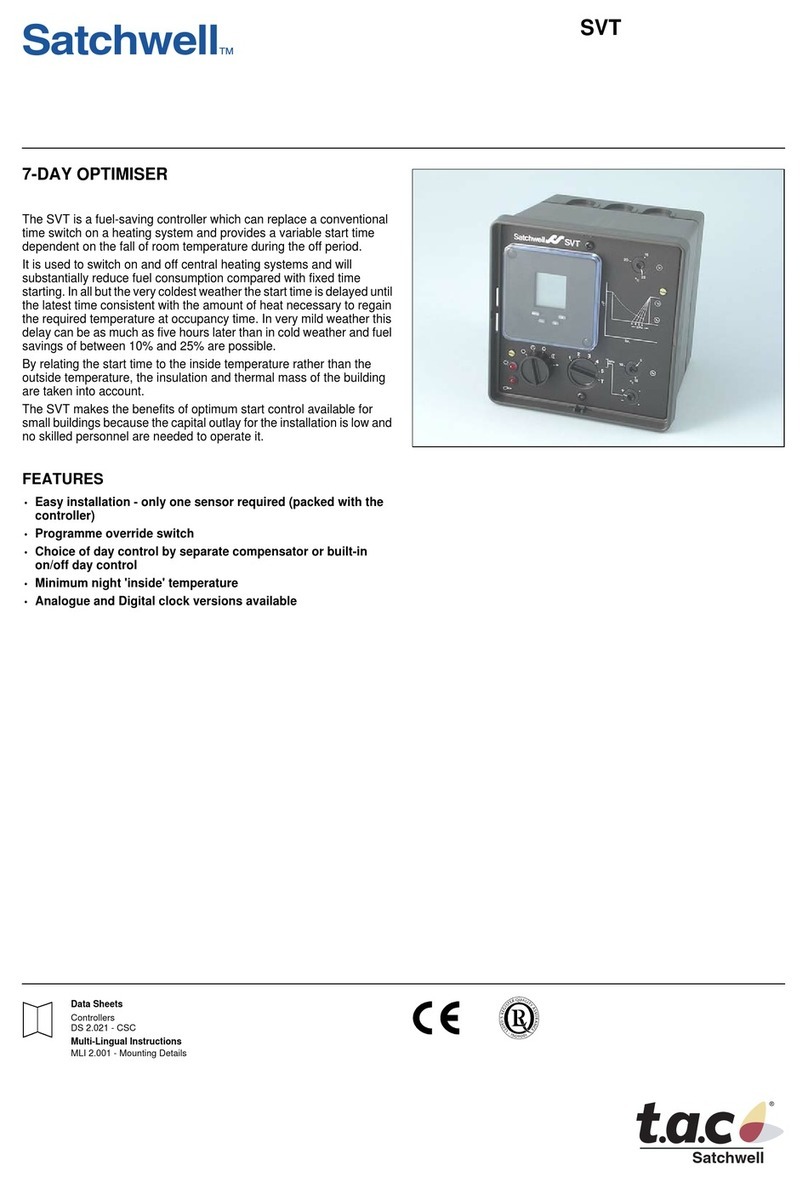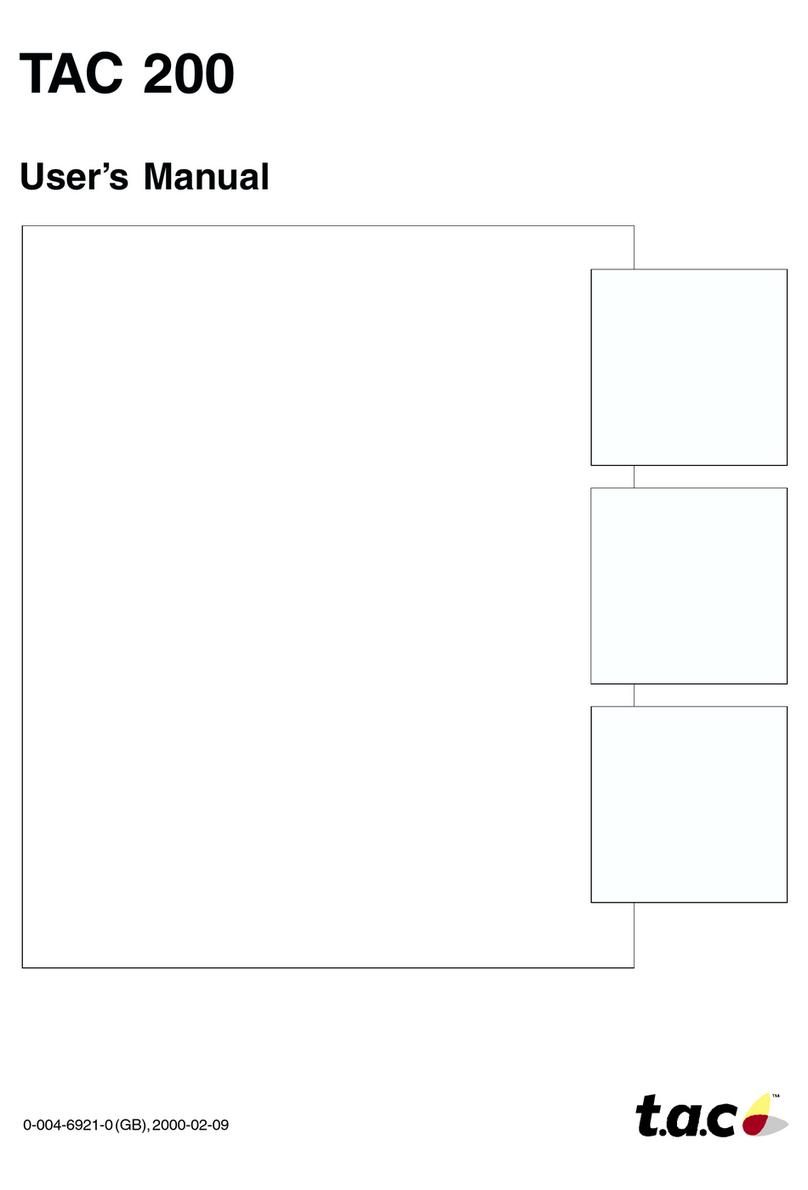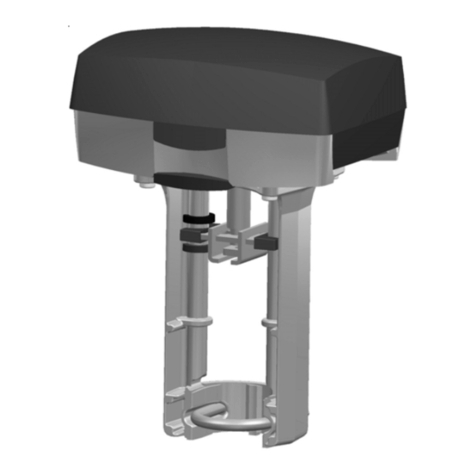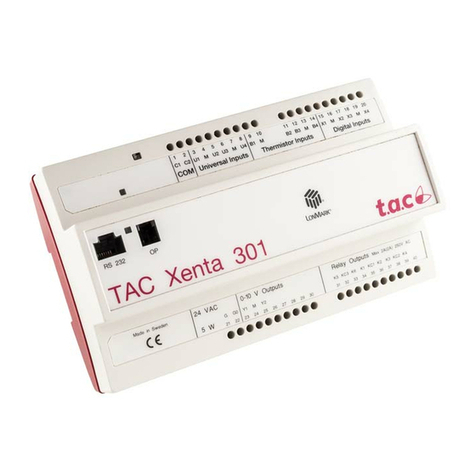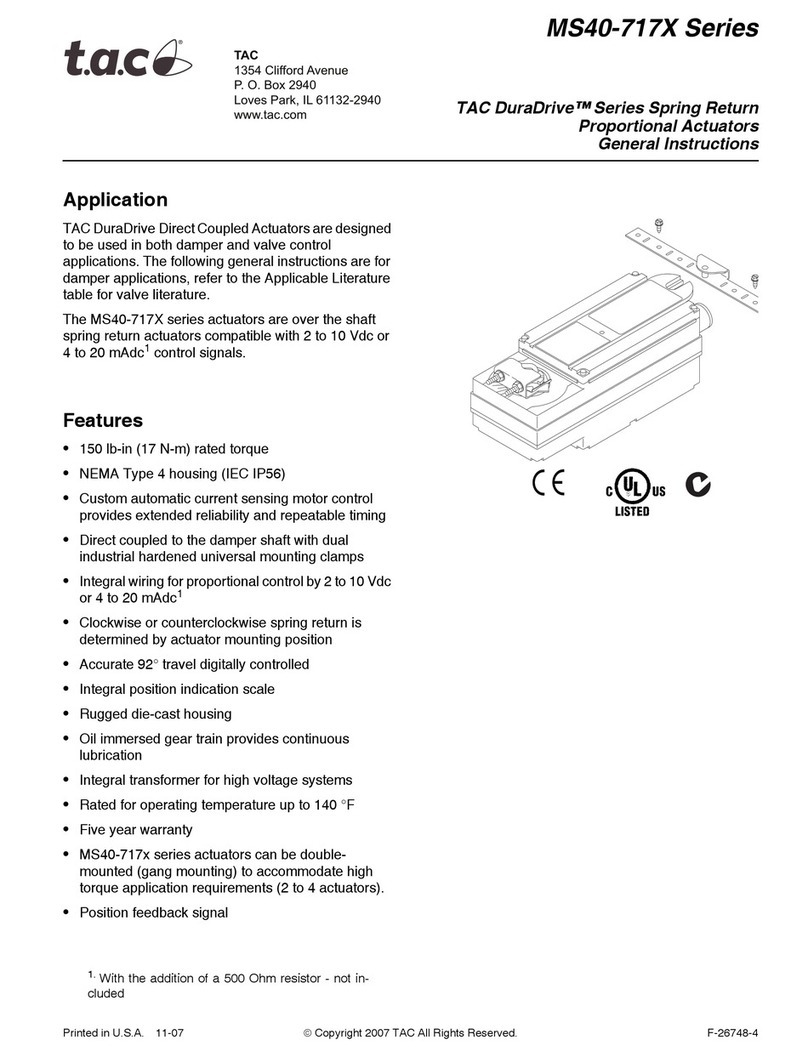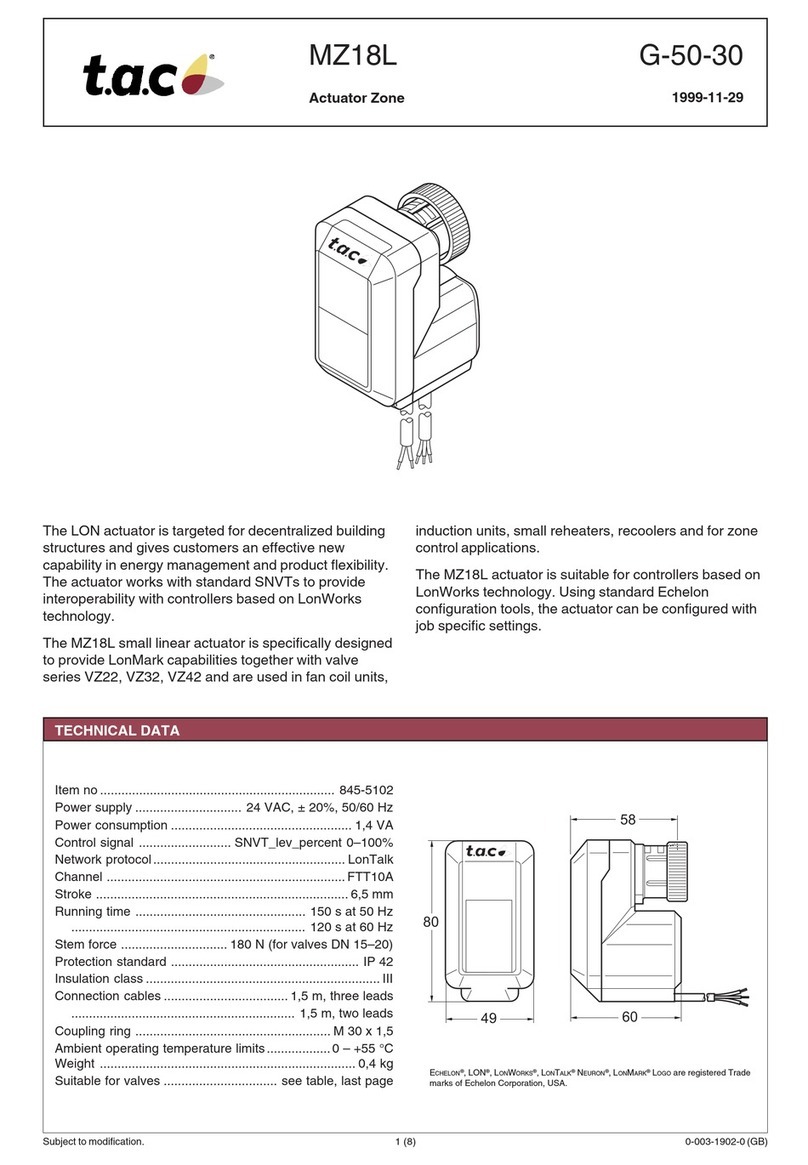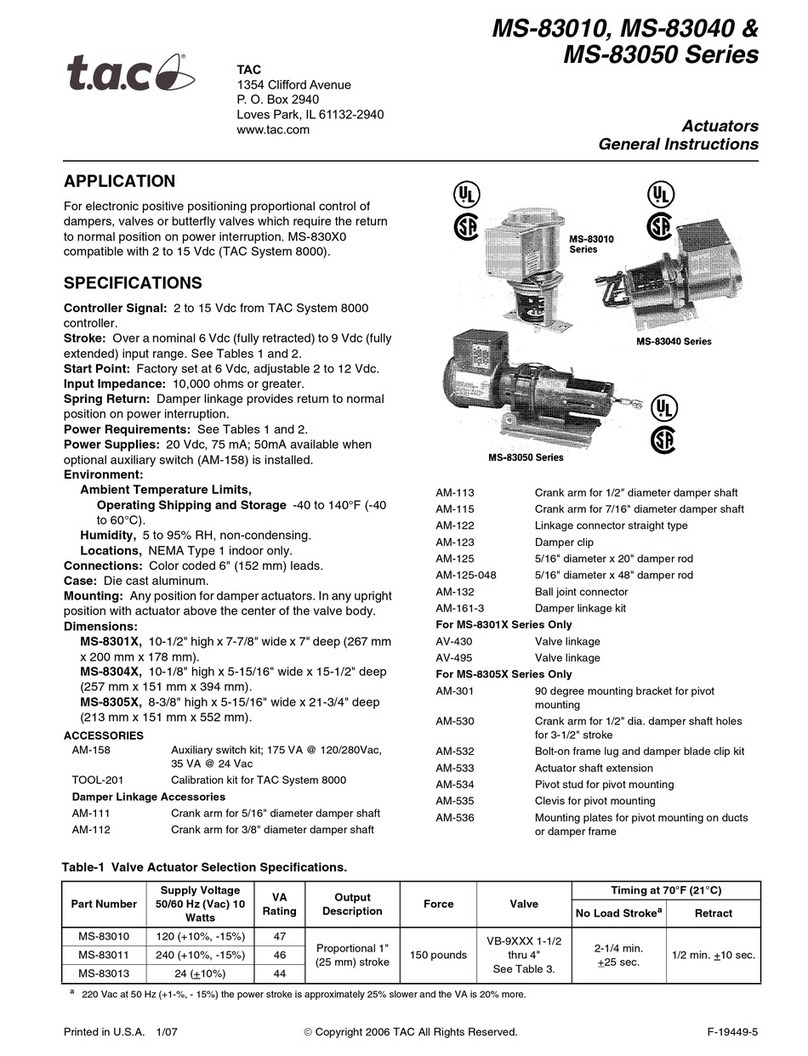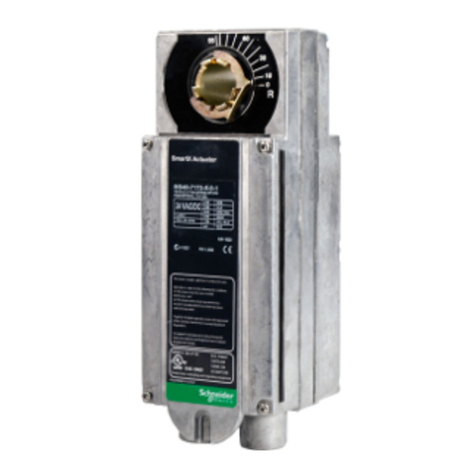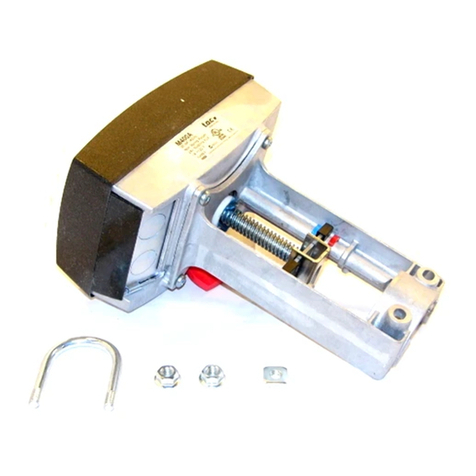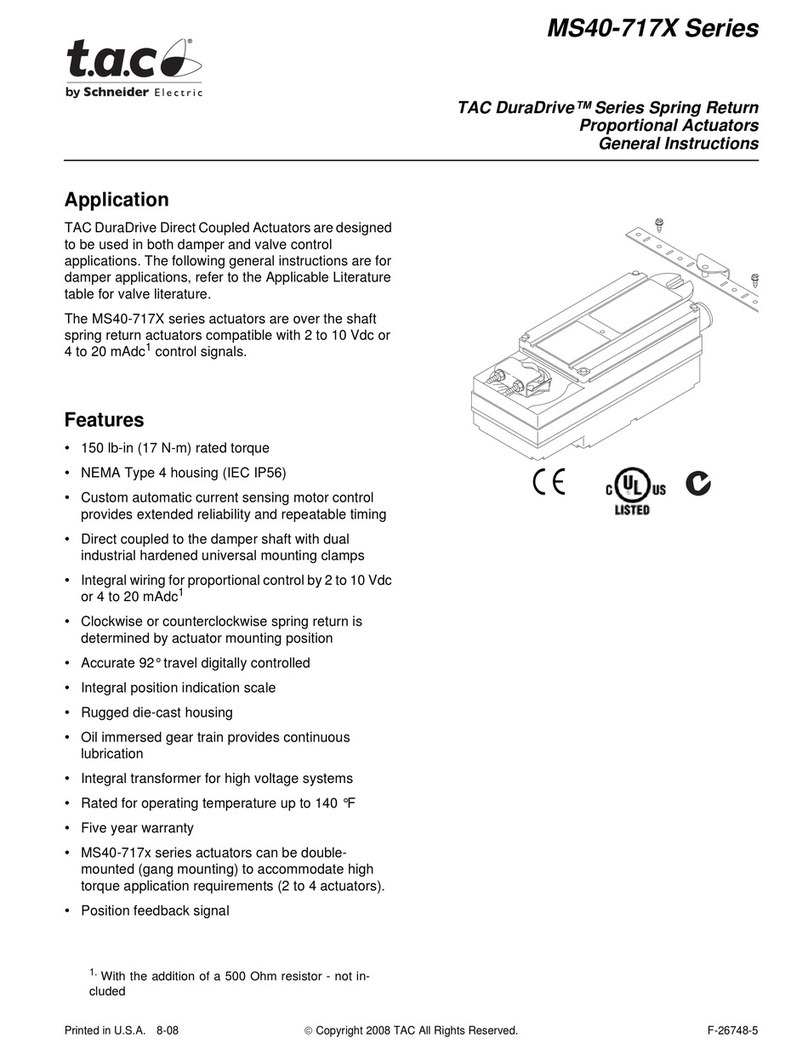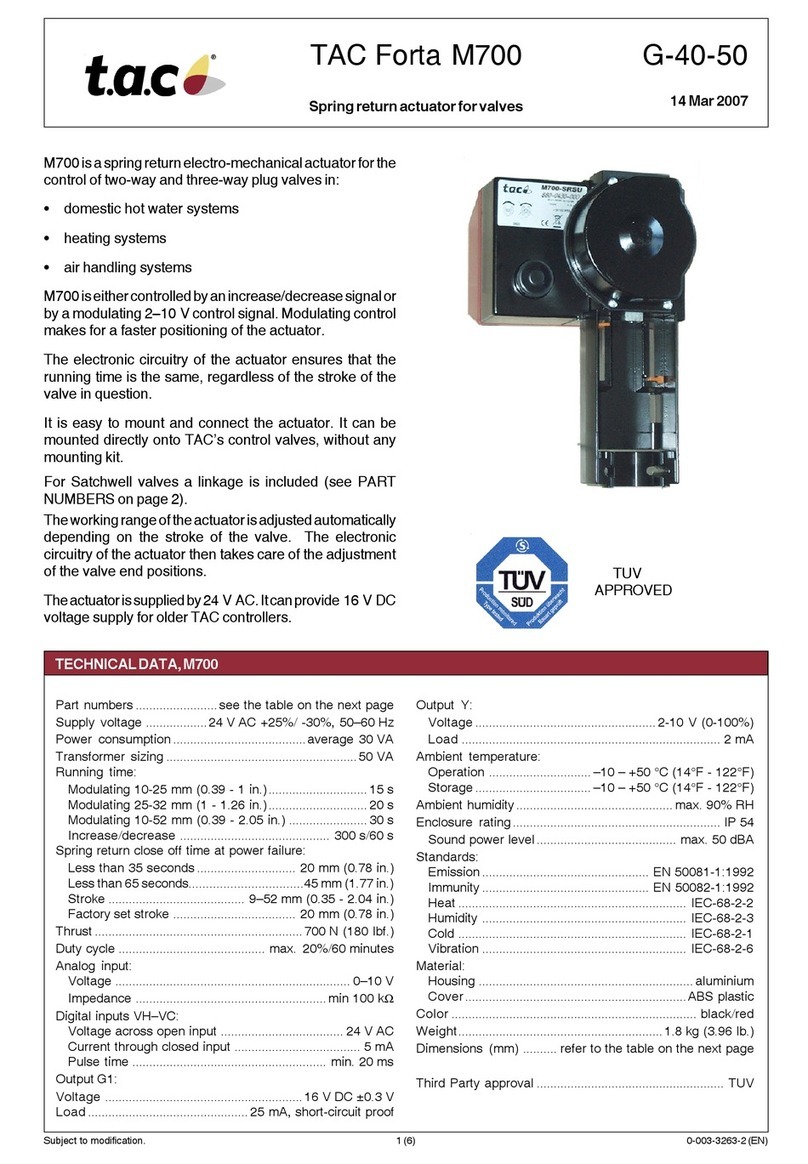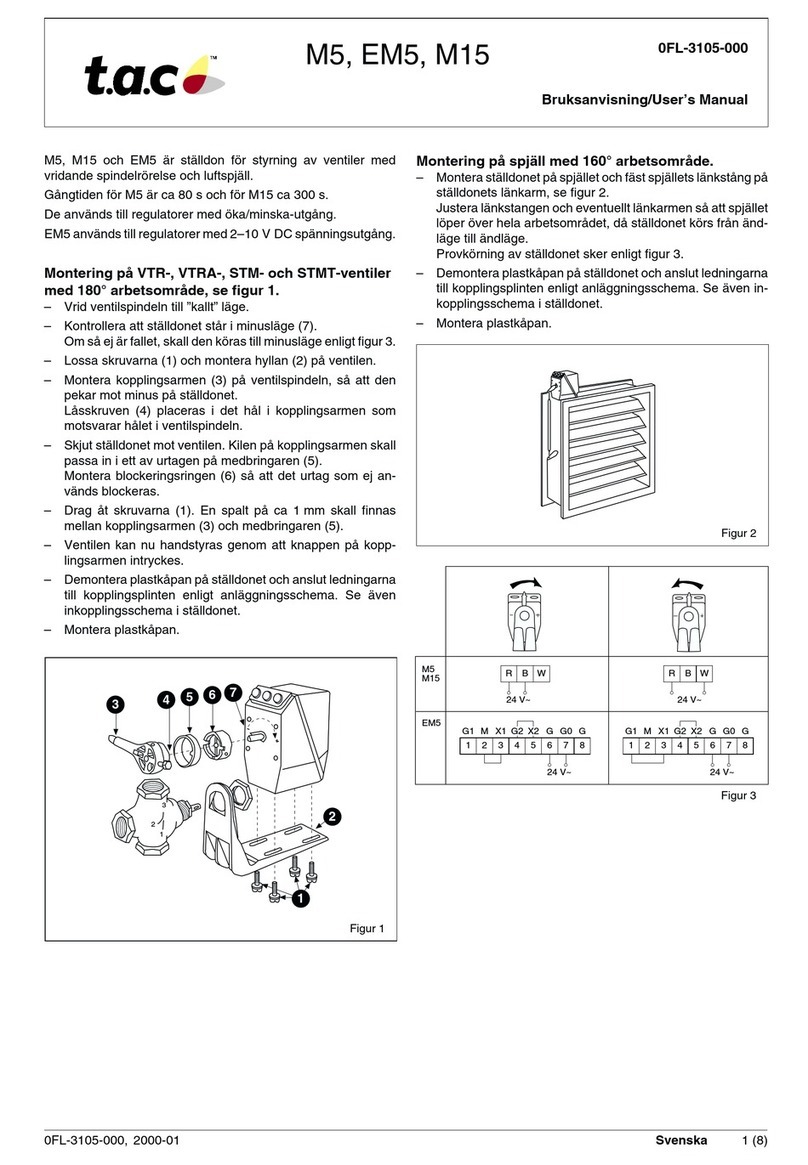
F-24853-4 © Copyright 2006 TAC All Rights Reserved. 5
Table-2 illustrates the numbering scheme and software
assignments of the eight 0-11 Vdc analog inputs. When
making these assignments, the first entry is the option slot
number on the connection MSC-MPC controller and the
second entry is the number of the analog input being used.
For example, when plugged into option slot number 2, analog
input number 1 has an assignment of AI 21.
Table-2 Software Assignments for 0-11 Vdc Analog
Input.
INPNT = AI# (as shown below) /NOT
Calculating SCALE and OFSET Using MOCALC
MOCALC comes standard with the DOS Configuration Tool
and is used to determine the proper values for SCALE and
OFSET when provided with the desired values to be displayed
from given input parameters. MOCALC is typically used to
calibrate the display in engineering units in accordance with
measurements taken. In some cases it can be used to correct
for tolerance errors in input or output readings.
To use MOCALC, several parameters must be measured
prior to running the program. First, the physical property to be
measured or controlled is sampled near the high end of its
scale and the corresponding bit value is recorded.Then
another reading is taken with the property at the low end of its
scale and the bit value displayed by the system is again
recorded. Once this information is determined, the MOCALC
program is able to calculate the appropriate values for SCALE
and OFSET. Note that the characteristics of the variable must
be linear to use MOCALC.
The sample calculations below are for a Belimo SM24
Actuator with the P500 feedback option that will be used to
control a valve from 0 to 100 percent open.
For the point to be calibrated, set OFSET = 0 and SCALE =
4096.
With the feedback wired, drive the actuator/valve fully open
(100%). Record the measured bit value displayed by the
system for this point. This is the “bit high value”. Next, drive
the actuator/valve fully closed (0%). Record the measured bit
value again. This is the “bit low value”.
You are now ready to execute the MOCALC program.
1. From the C:\XCM directory, type MOCALC and press
ENTER.
2. At the enter number prompt, type 1 to select Formulas for
Scale and OFSET.
3. At the Enter Number prompt, type 6 to select Formulas for
Bit High...Bit Low.
The program prompts you for the device range high and range
low values. These values are the range of the points display,
which in this case is from 0 to 100 percent (open). You will
also need to enter the recorded bit values when the actuator
was driven to these two positions. MOCALC will then compute
the proper SCALE and OFSET for the point to display linearly
across the actuator’s travel range.
Please Enter Device Range High Value
Number: 100
Please Enter Device Range Low Value
Number: 0
Please Enter Recorded BIT HIGH Value
Number: 3298
Please Enter Recorded BIT LOW Value
Number: 517
SCALE: 147.28
OFSET: -18.59
In the example above, the desired display range for the
actuator is 0 to 100 (percent open). The corresponding low
and high bit values were recorded as 517 and 3298,
respectively.
MOCALC determined SCALE to be 147.28 and OFSET to be
-18.59.
The formulas used by MOCALC are as follows:
SCALE = 4096 * (RANHI - RANLO)
(BITHI - BITLO)
OFSET = RANLO (SCALE * BITLO)
4096
Option Slot # On The MSC-MPC Controller
AI# 1 2 3 4
AI1 AI 11 AI 21 AI 31 AI 41
AI2 AI 12 AI 22 AI 32 AI 42
AI3 AI 13 AI 23 AI 33 AI 43
AI4 AI 14 AI 24 AI 34 AI 44
AI5 AI 15 AI 25 AI 35 AI 45
AI6 AI 16 AI 26 AI 36 AI 46
AI7 AI 17 AI 27 AI 37 AI 47
AI8 AI 18 AI 28 AI 38 AI 48
SCALE OFSET CVTYP
11 0 LIN 1
